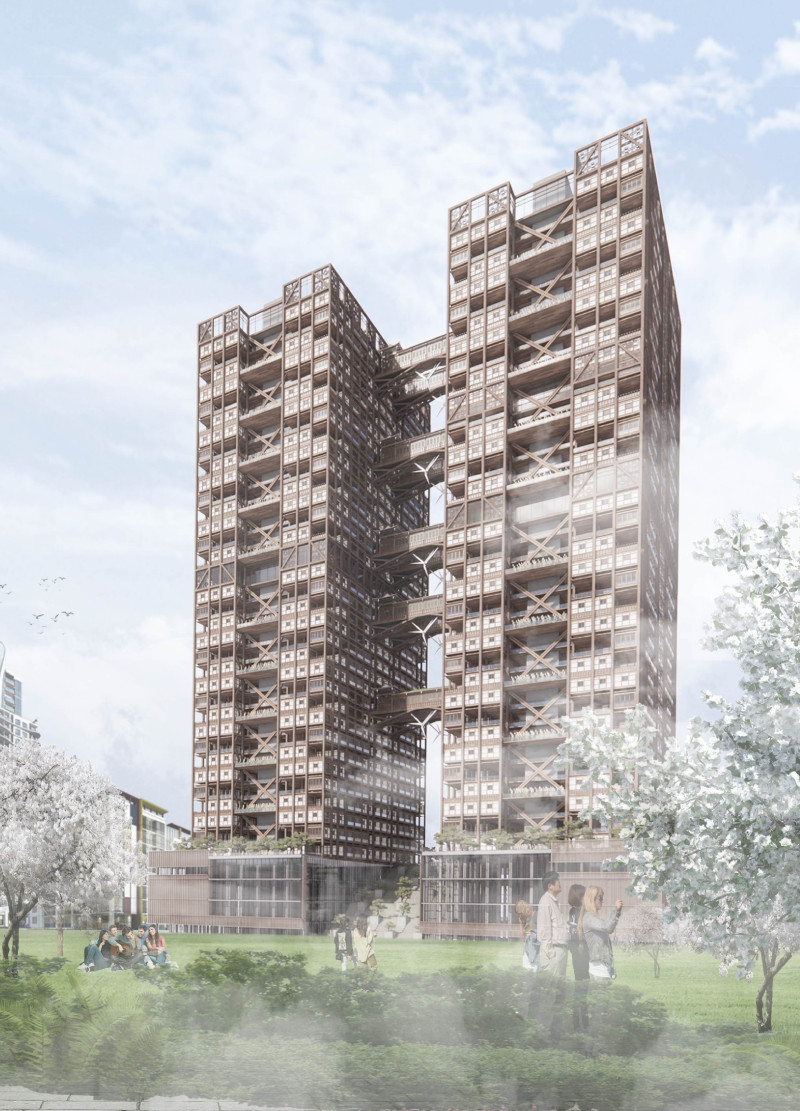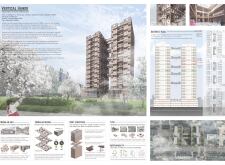5 key facts about this project
Vertical Hanok is located at 3, Gaetbeol-ro, Yeonsu-gu, Incheon, Republic of Korea. The design aims to bring back the traditional Korean building style known as Hanok, which has existed since B.C. 6000. Rapid urbanization and western influence have diminished the visibility of this architectural form in modern cities. By creating a vertical version of Hanok, the project seeks to preserve cultural identity while addressing the practical needs of an international city like Songdo.
Concept and Function
The idea of Vertical Hanok merges traditional and modern design. It offers a mix of residential and office spaces to meet diverse urban demands. By incorporating different styles of Hanok, the design provides a variety of aesthetics while encouraging community interaction. This approach makes the building not just a structure but a part of the urban fabric, reducing the need for commuting and promoting a more connected lifestyle.
Sustainability Initiatives
Sustainability plays a crucial role in the design of Vertical Hanok. A green roof system helps manage stormwater and cool the building, benefiting both the environment and its occupants. Natural ventilation improves indoor air quality without relying solely on mechanical systems, promoting energy efficiency. Wind turbines harness breezes generated around the building, contributing to renewable energy needs and enhancing overall sustainability.
Materiality and Structural Integrity
Material choice is important for both stability and environmental impact. Cross Laminated Timber (CLT) forms the main structure, reducing the need for concrete and lowering the building's overall carbon footprint. This decision reflects a commitment to sustainability while ensuring durability.
Vertical Hanok showcases traditional features such as specialized floors and distinctive rooflines. These elements honor the heritage of Hanok while fulfilling modern requirements in a high-rise format. The design respects historical silhouettes while integrating practical functionalities, such as effective natural ventilation and water management systems, maintaining both tradition and innovation.



















































